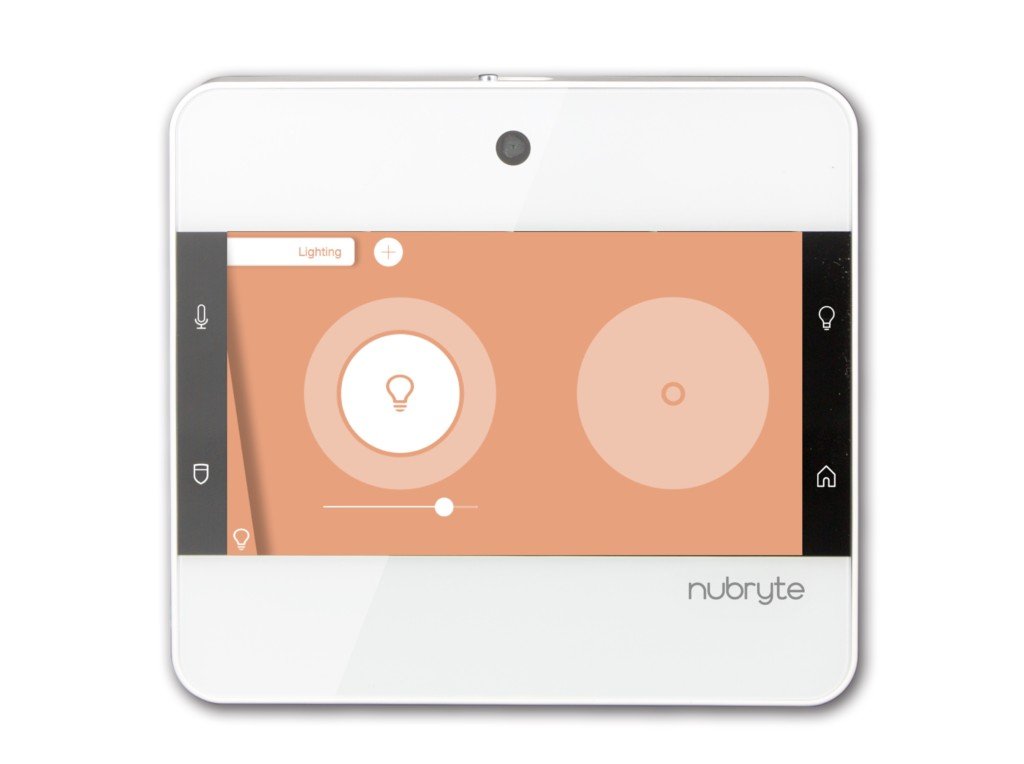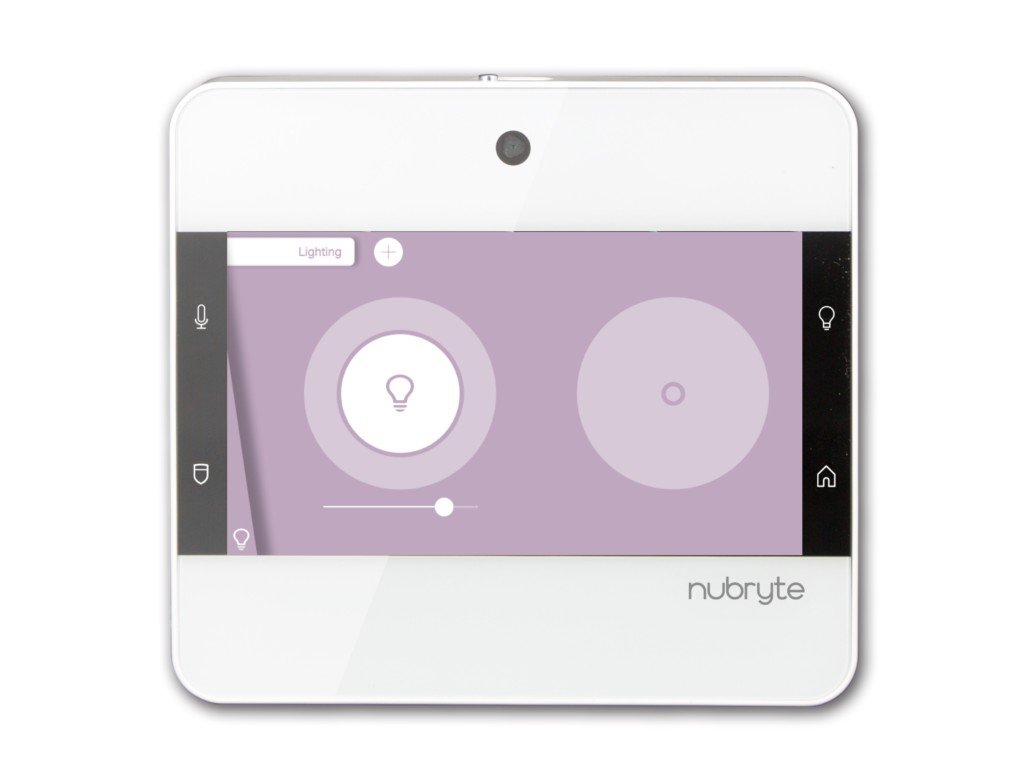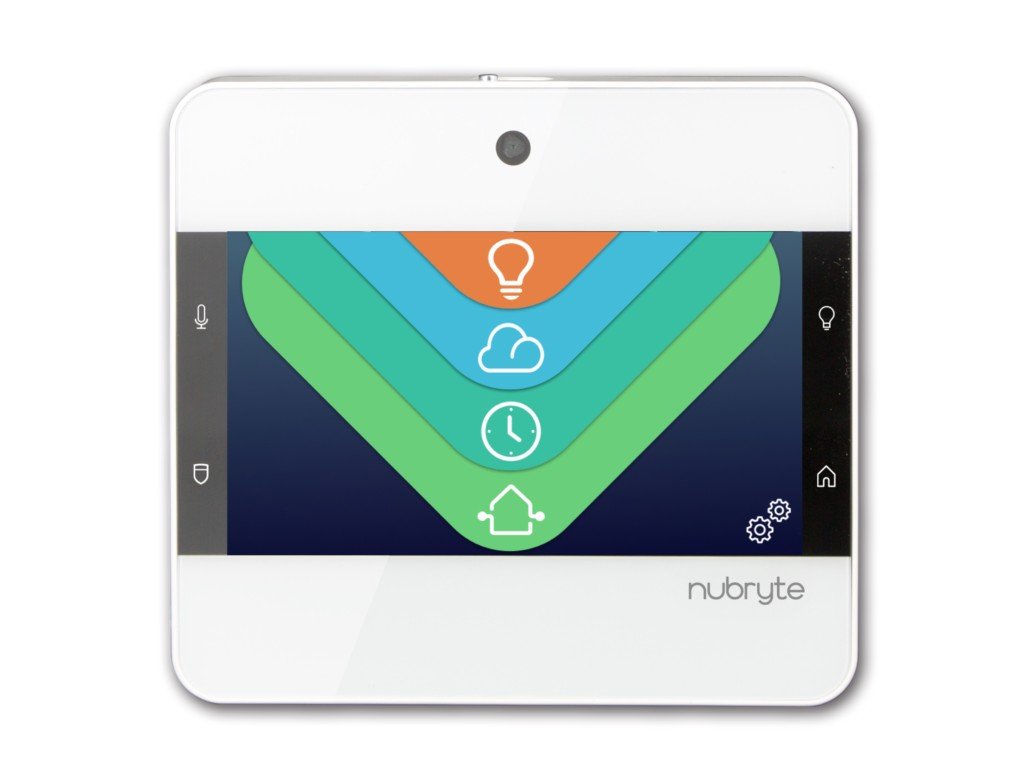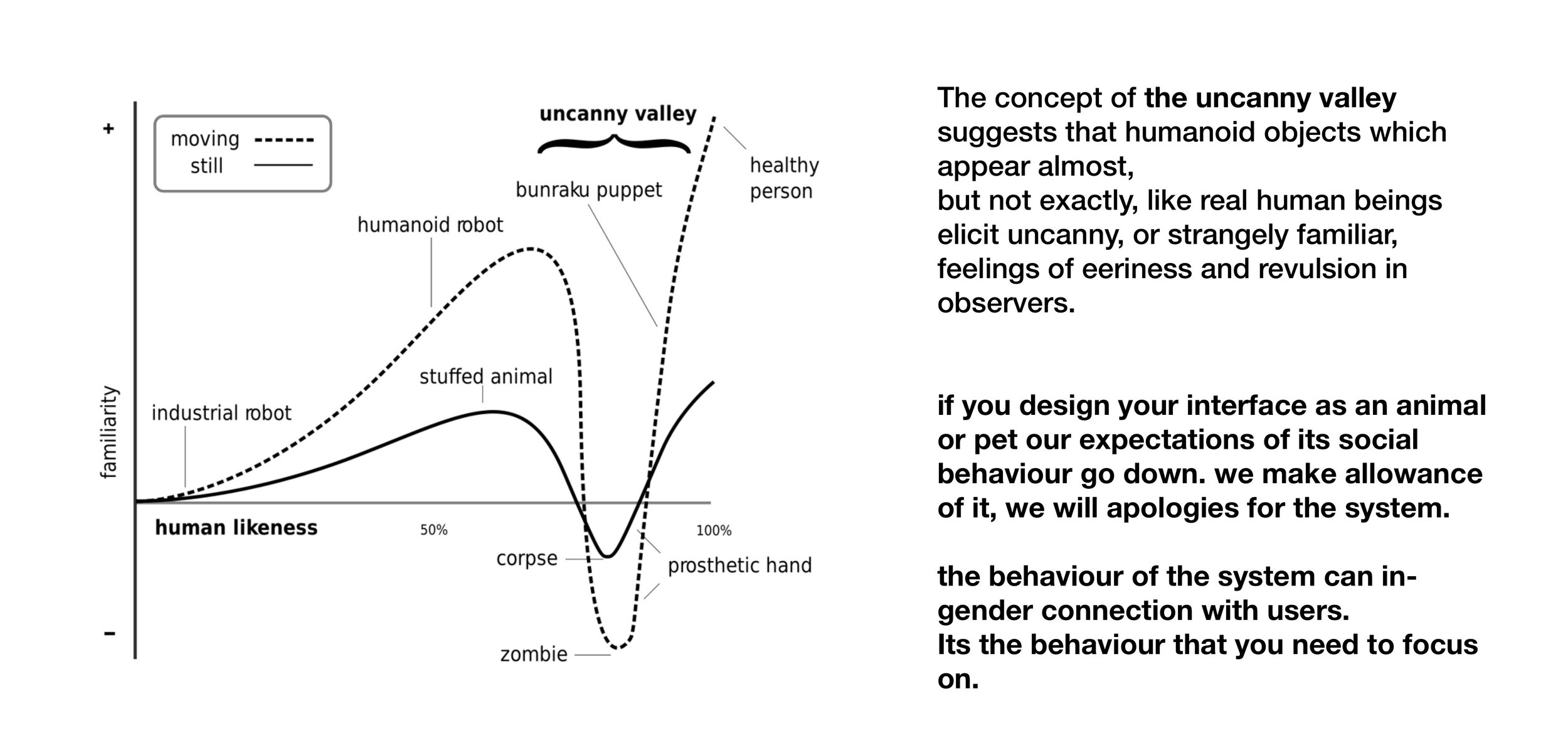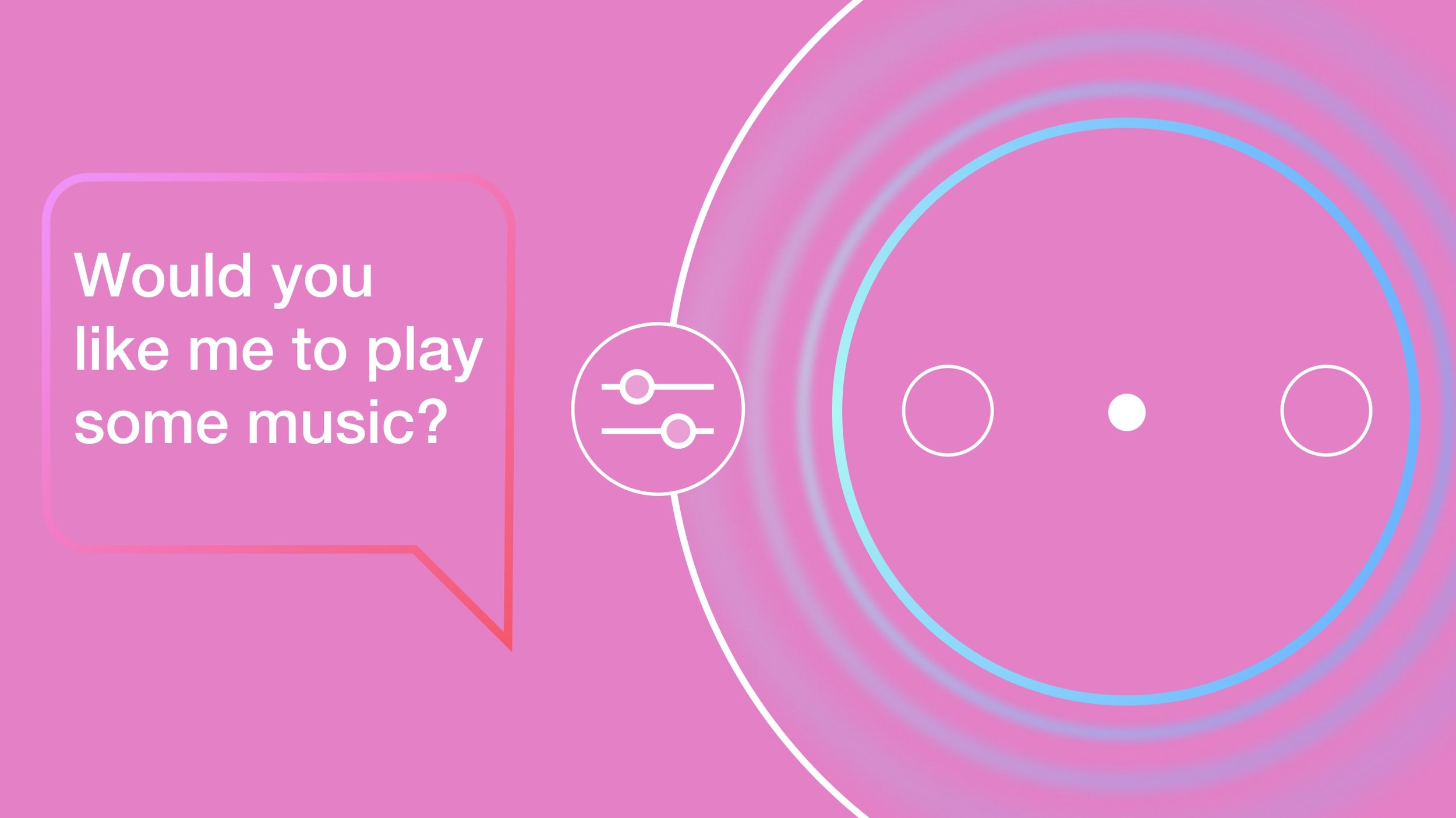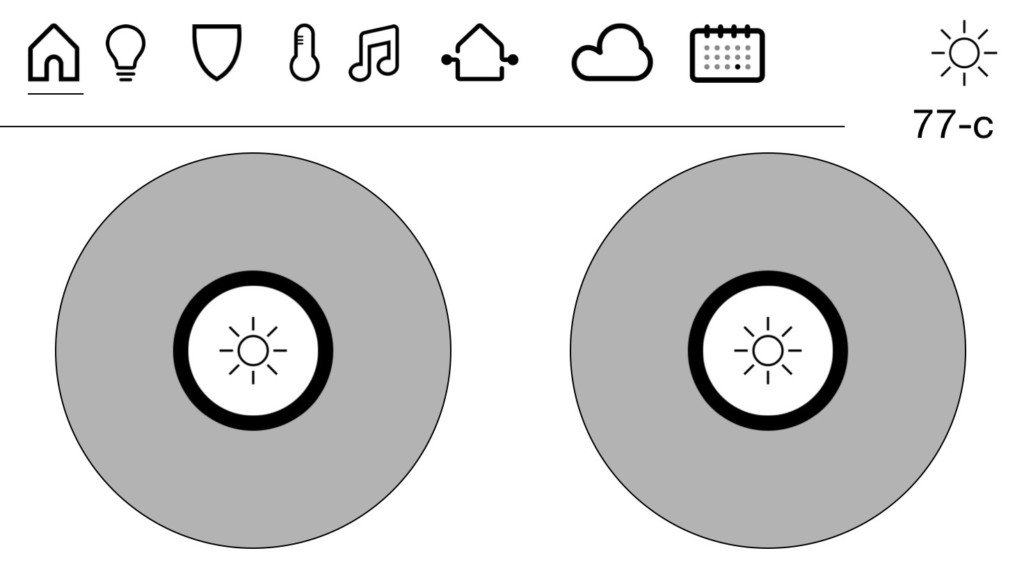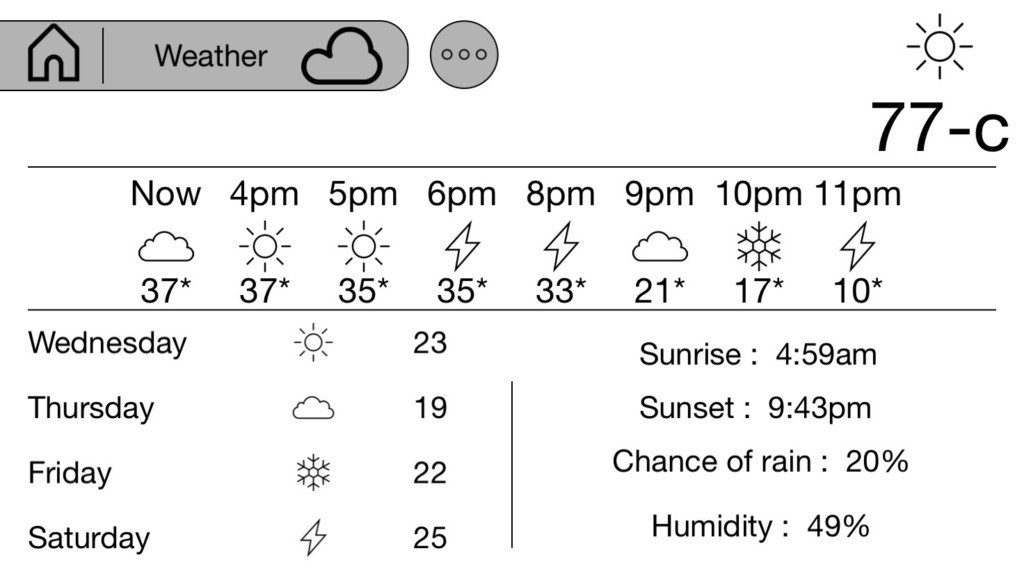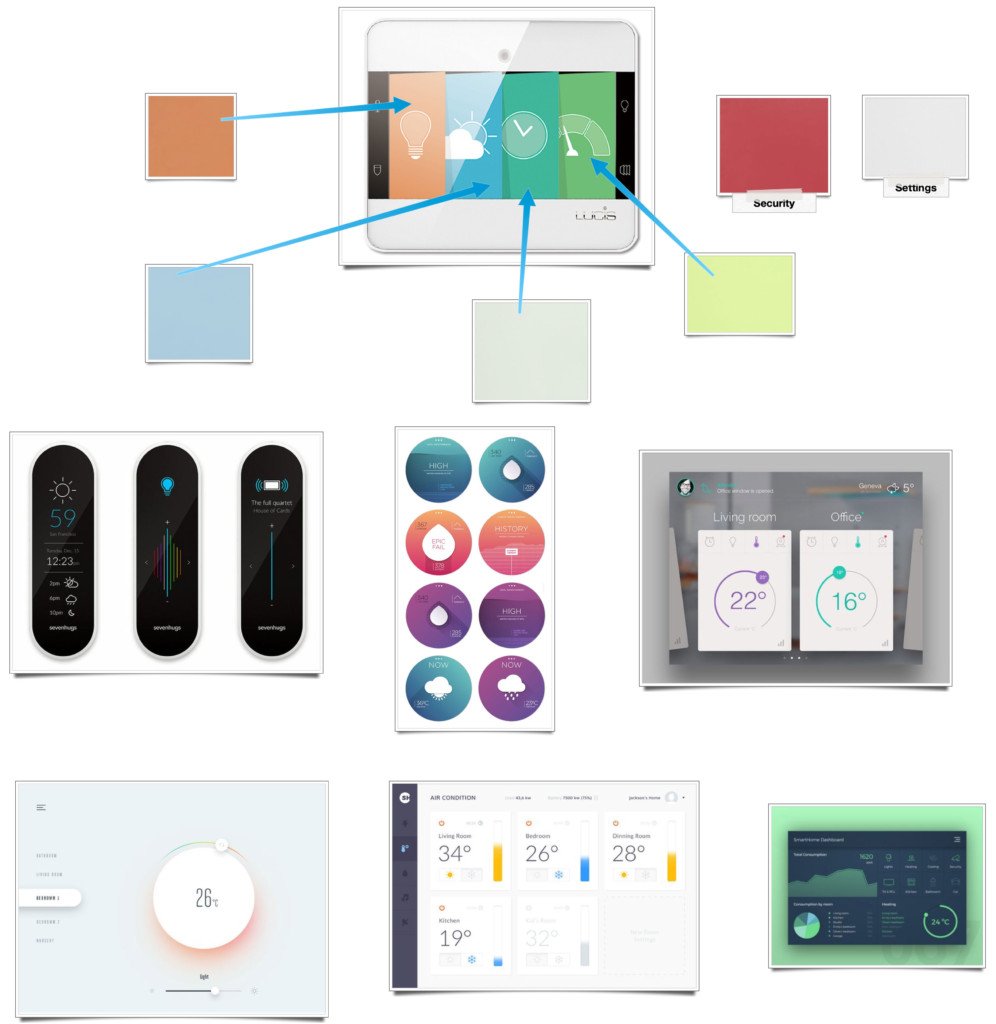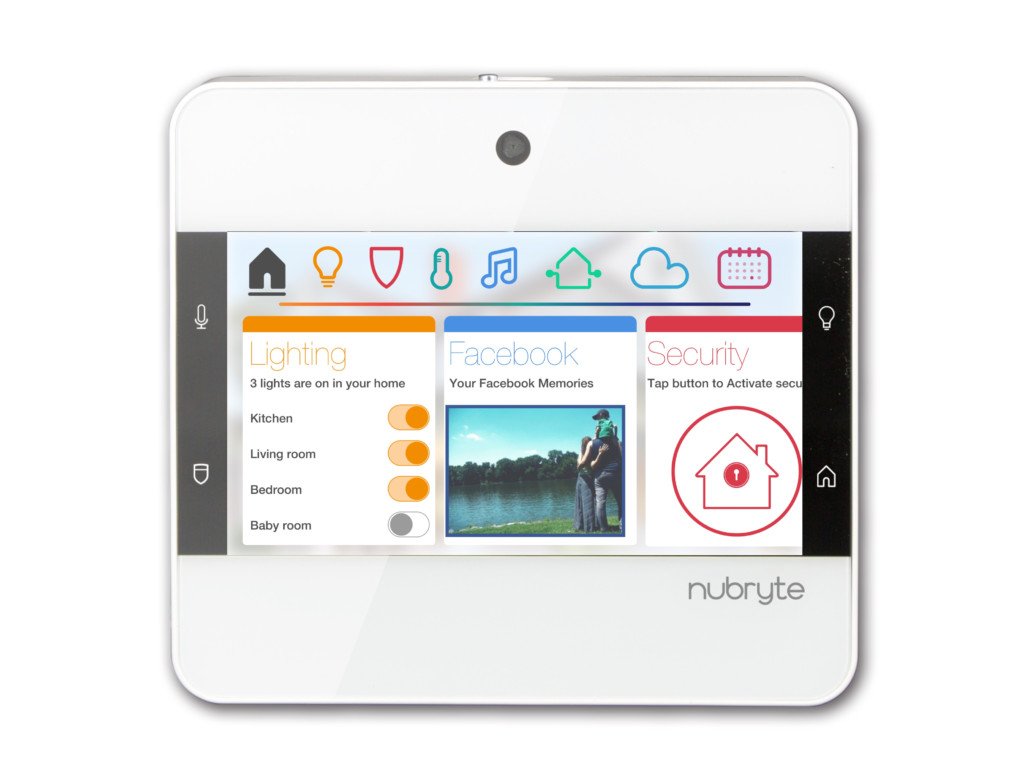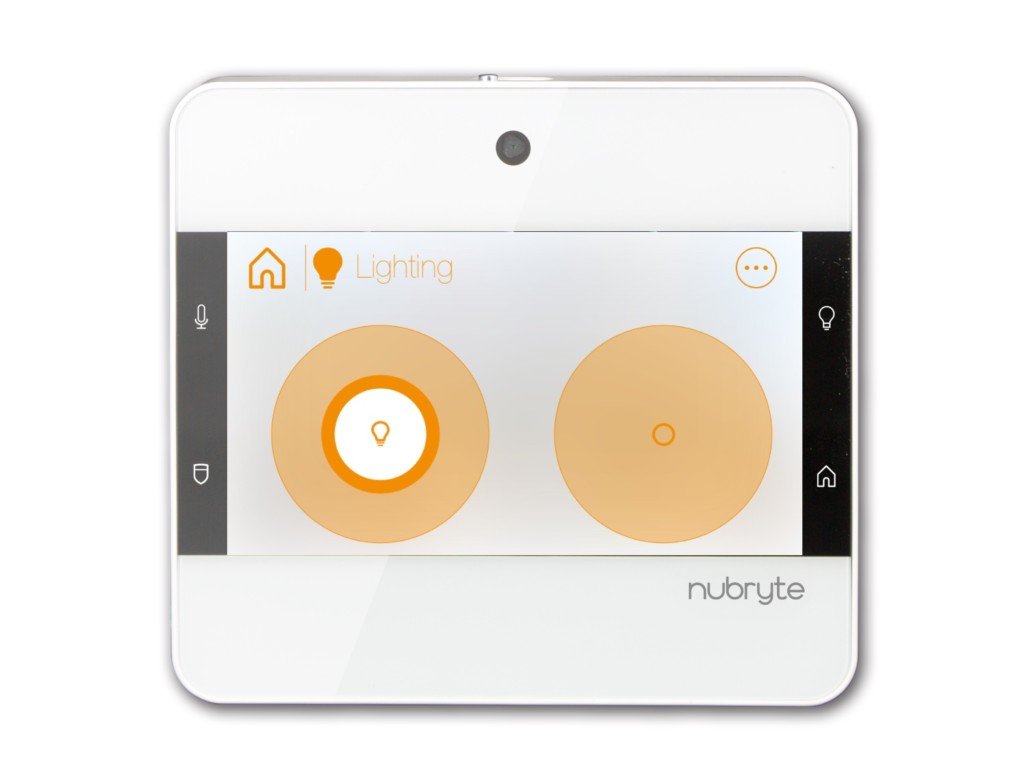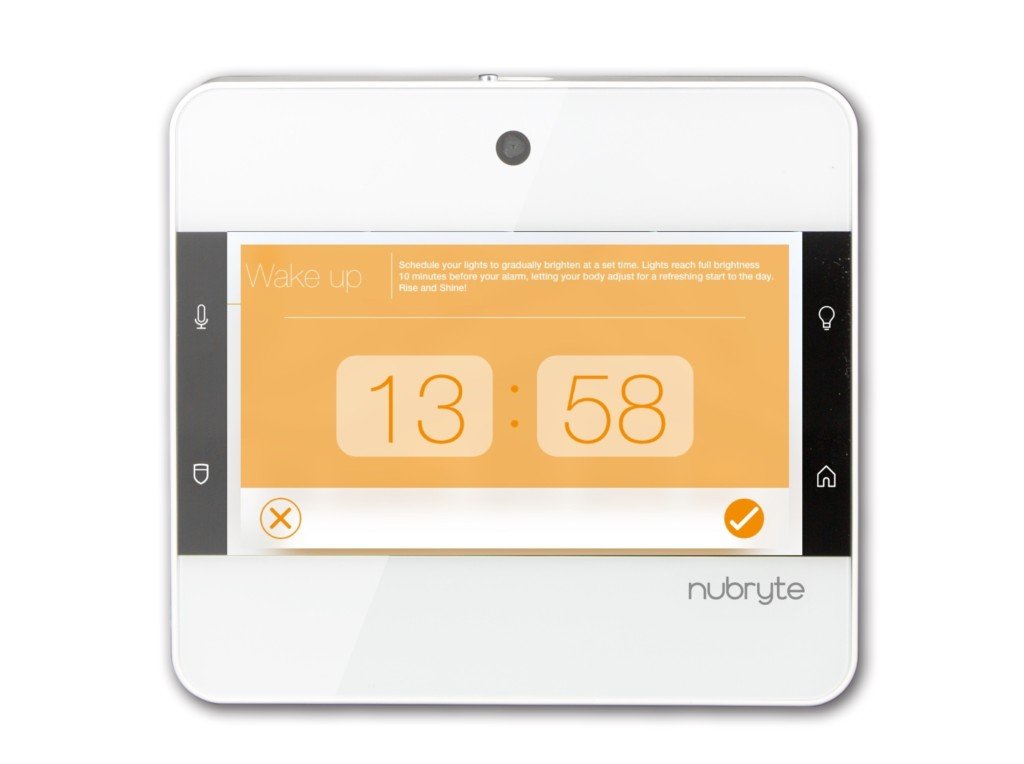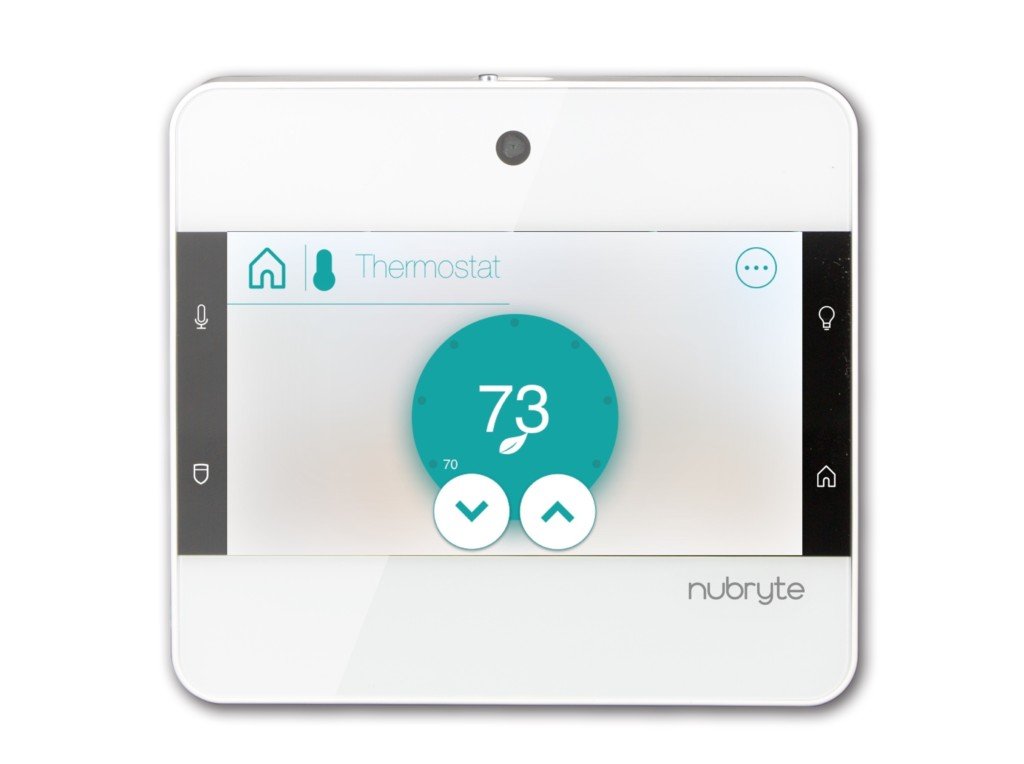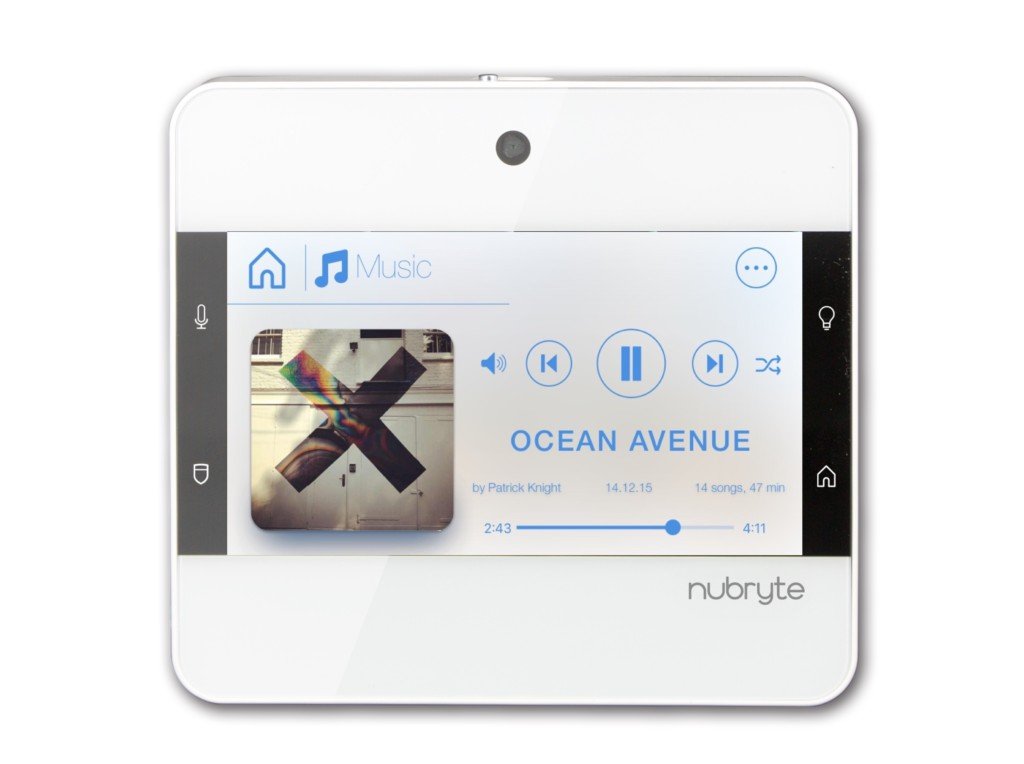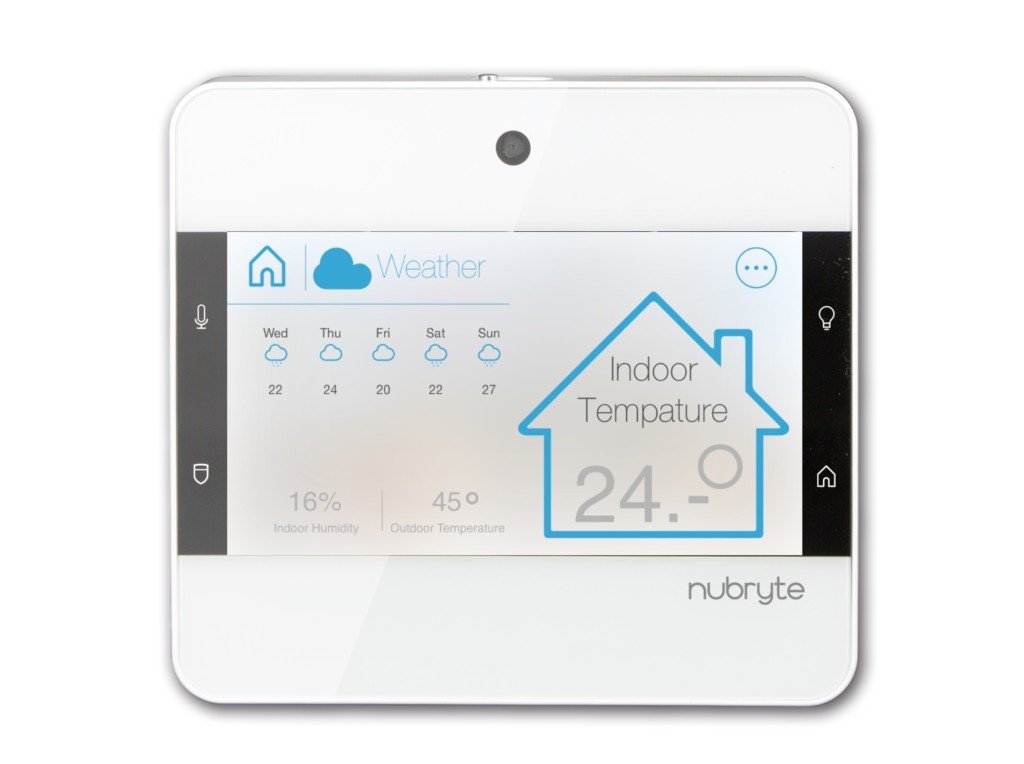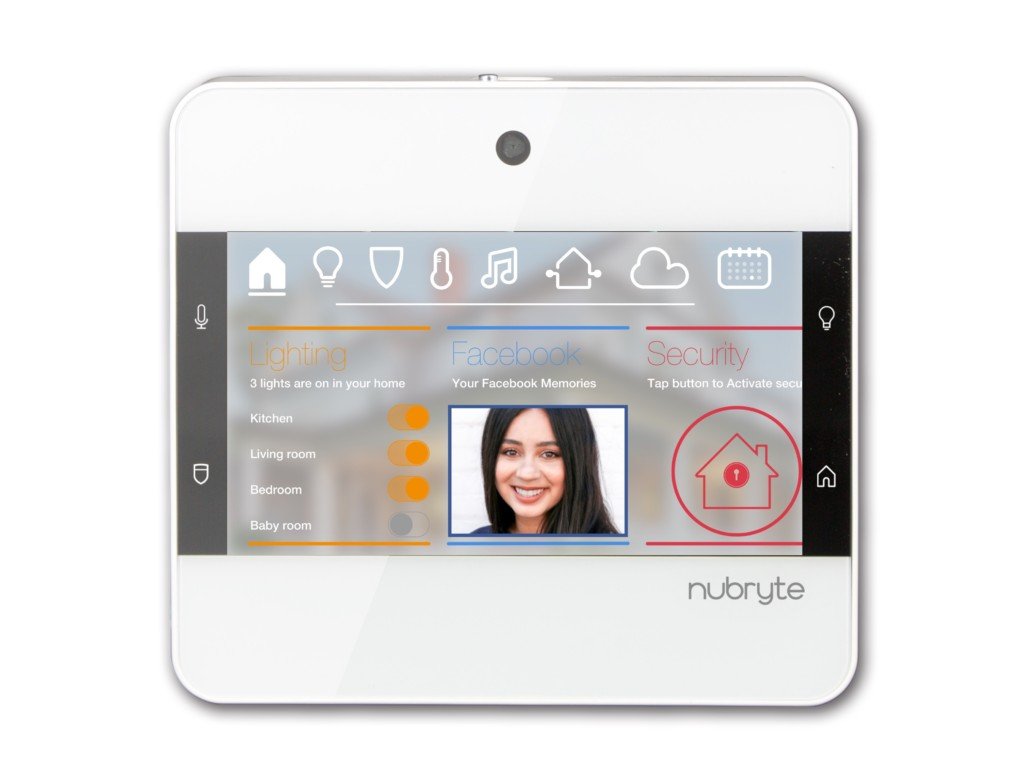Nubryte Panel
NuBryte is a home management system that takes all the functions in your house and brings them into one place. Lights, security, thermostat. The Nubryte device was awarded ‘The Best Home Automation System’ in 2017 & 2018 at IoT Breakthrough Awards.
NuBryte is a product developed by Lucis Technologies, which intends to be the ‘complete smart home solution. It currently exists as a console, which replaces the light fitting in the home and brings all home management considerations into one place, i.e. lighting, security, thermostat, intercom. It also exists as a phone app so that control can be maintained outside the home. This system has been developed in China for the U.S. market. As technology supersedes technology the understanding of IoT and home tech must be adaptable and platform agnostics.
I came on board at Lucis-Tech to run and manage the UX Team. for both panel and App.
When I first came on board a number of issues needed to be addressed.
From training the team to making the team aware on iOS / Androids standards. I felt the best and most pressing issue that needed to be taken care of was the lack of consistency within the Apps and Panel. In order to get consistency and quality control of assets a design style needed to be created, this consists of all the buttons, icons and screen colors.
The development and management of the design style was created in sketch and then handed over to Lingo.
Lingo establishes a shared design language for the team to work with, taking the uncertainty out of the equation by letting each designer know the most updated version of the design element they are working on and leading to an increase in efficiency and productivity.
With a standard of quality and consistency addressed I could focus on Product Development for third-party integrations.
This was most important and required the largest amount of research and awareness of the user. I had to be mindful that some users will already have these products installed in the home and will have an affinity and cognitive recall to the currently installed products within the home. Care had to be taken into how it was to be integrated and also how it could be amplified with the use of the Nubryte.
I created user cases, user journeys, focus groups, workshops and Affinity / Empathy maps to best help plot the integration of third-party elements. The research proved that while the current product features of the Nubryte Panel were sufficient for the user to make the purchase how it integrated and elevated the other integrations were what sealed the deal. Take for example Amazon Alexa’s integration with Nubryte. While running one of the workshops for the Alexa integration users spoke about how they were sometimes unaware if the statement or questions had been received by Alexa. this drove the focus group to talk about how and what was needed for a screenless UI.
This led me to the research known as The uncanny valley. The concept of the uncanny valley suggests that humanoid objects which appear almost, but not exactly, like real human beings elicit uncanny, or strangely familiar, feelings of eeriness and revulsion in observers. I came up with the concept of colors on the panel to depict how we can make an allowance of it. The behavior of the system can in-gender connection with the user. The Anthropomorphism behavior of the question asked was displayed by a color code displaying persuasion, flattery and trust.
Implementing Gen2 information architecture
When I sat down with the engineering team to look at the second generation of the panel we had a number of challenges to address from Legacy, Platform adaptability, Gen 1 constraints, ODM’s capabilities and App capabilities. In looking at all of these we had to have a concentration of, and not a reduction of the originals first features. We had to remember this is a device that goes into peoples homes, we had to focus on Trust and understanding of other people in the home. There are so many other IoT products in the market, people don’t know what to choose, they’re skeptical. Also, so much of this sector is unknown no walled gardens with an end to end solutions. We had to play on our new partnerships with established brands like Amazon Alexa, Google Home, Nest, and Yale. Once our users can see that if these brands trust us, then maybe so they should too.
The trust came in the one unified constant within the home IoT sector, the use of Zigbee sensor tech,
with NuBryte to extend the consoles reach within the area its controlling. users will only need one console in the home.
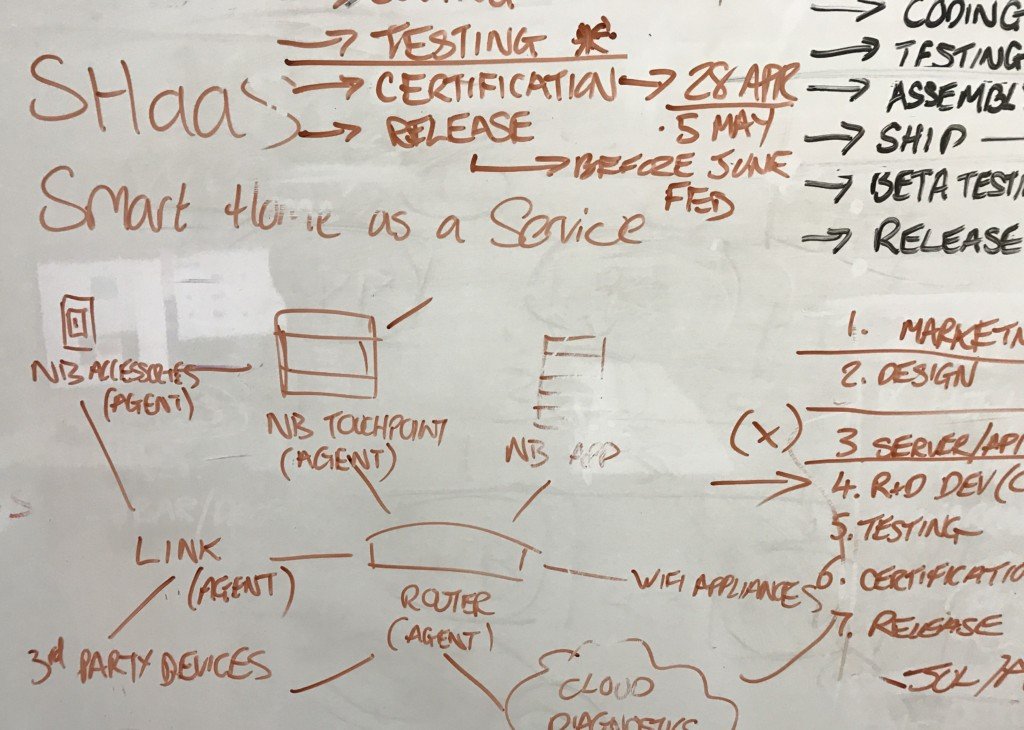

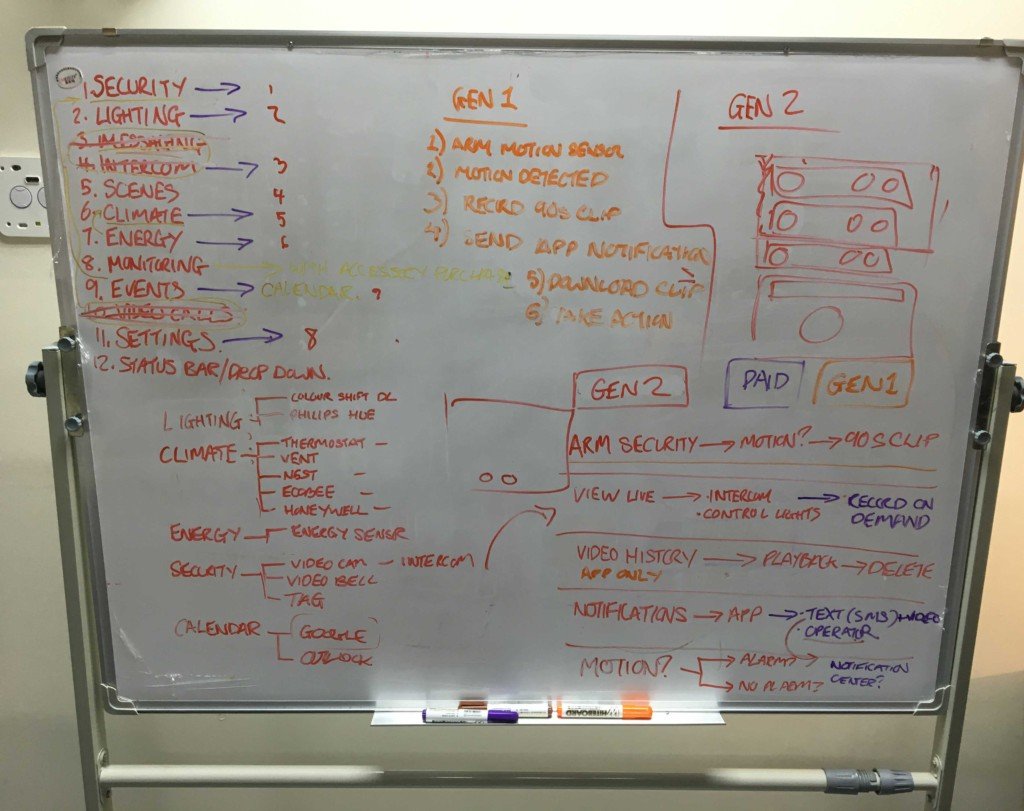
Controlling and Reduction were the underpinning ideas when researching the Gen-2 User Experience.
After conducting an extensive Competitor analysis and facilitating onsite interviews and controlled User Testing.
Similarities started to appear one was the demographics of the user that purchase our product we noticed it was your standard Geeky men in their 40’s. The kind of guys who like to have all the latest gadgets. The onsite interviews with current users of the product led us to see as one user stated he buys it, the family has to live with it.
For Gen-2 I wanted to refine every detail, in the service of the user in order to get rid of complexity. For this focused our design research on the users who might not be as comfortable with new technologies. The long-suffering wife who says, ‘What have you brought home this time?’. To help ease this pain point I adopted the 3 click theory (Krug, 2014). This theory while developed for website design could work on a panel, It suggests that a user of a website should be able to find any information with no more than three mouse clicks. This will allow for streamlining functionality and will eliminate noise surrounding multiple remote control units for multiple devices.
With this theory underpinning the consul redesign this approach allowed us to disconnect from the past designs. In the past, the previous architecture and design would replicate the same functions on the panel and App. But by bringing in 3 click theory we could Offload the heavy lifting functions on the less powered panel to the App in the phones that had far more powerful processing speed. This intern helped speed up dev time on the ODM side for the panel. I wanted to take an experience that they know very well and actually add to it, to make it more useful and more enjoyable.
These plans combined with trust in the system add a sense of depth and understanding of the user.
Moving away from a carbon copy of the panel and App Interface meant we could see how the panel could be a an aid to the homes everyday functions. That is why a dynamic card interface was utilised. This allowed users to add the most relevant cards with the most concise controls, The Gen-2 System would have deep integrated AI that would scan the panels use in the home and would display the most relevant card at defined times of the day. Example If the parent always went to pickup the children at 4pm the house alarm card will move to the left of screen an be displayed ready for the user to turn on.
The exciting thing about NuBryte 2.0 is that we’ve got permission from companies to integrate the control of their products into the NuBryte console. So Alexa, Google Home, Nest, and Yale will all be controllable in one place. And with this AI system it can learn and suggest when is an appropriate time to advise of these integrations, There are very few products like that on the market.
NuBryte 2.0 has gained affiliation with established brands such as Amazon Alexa, Google Home, Nest thermostat and Yale locks. While NuBryte is now allowed to integrate the control of these other brand’s devices into their console. This should ultimately allow the user to control all their smart home devices from one central unit. And yes I did say it in the meeting to my team “One device to rule them all”







